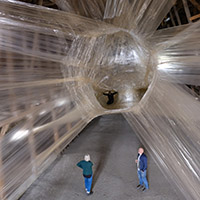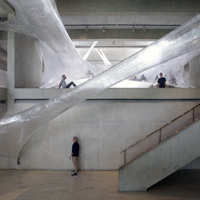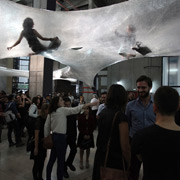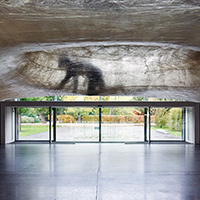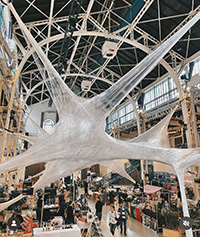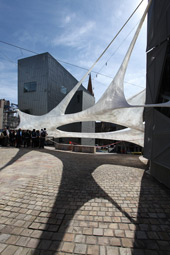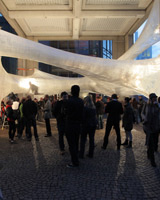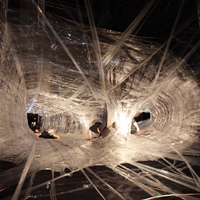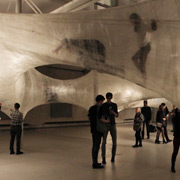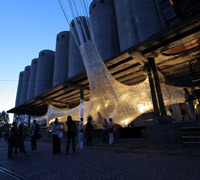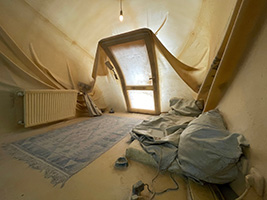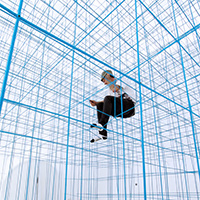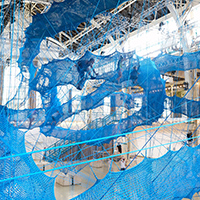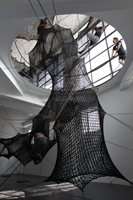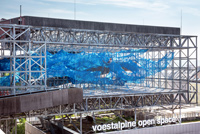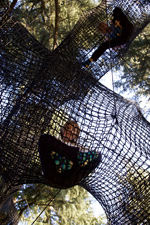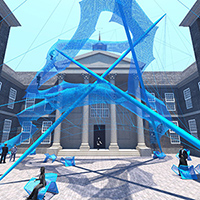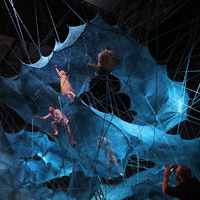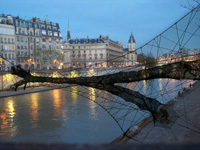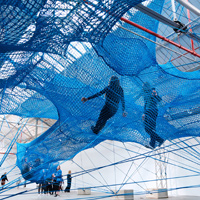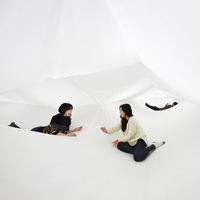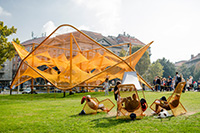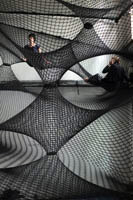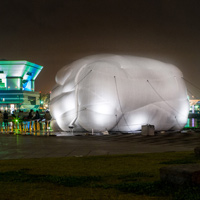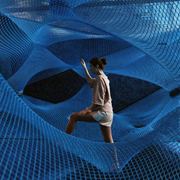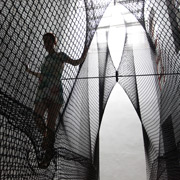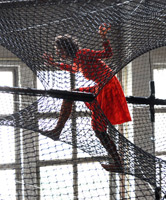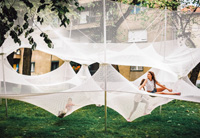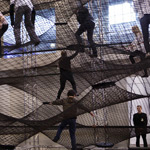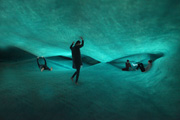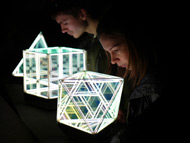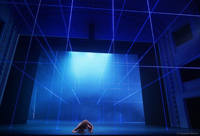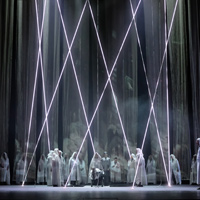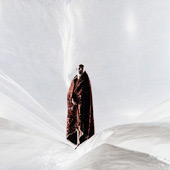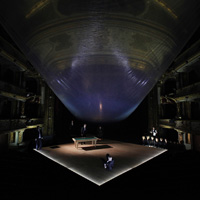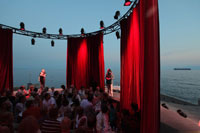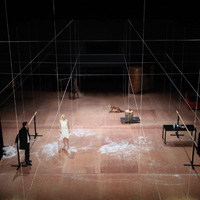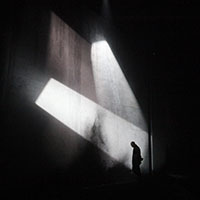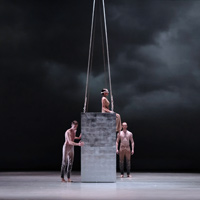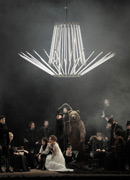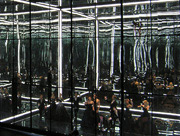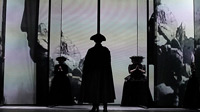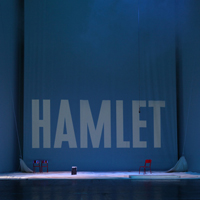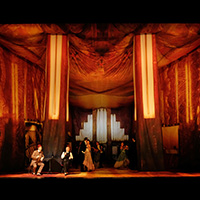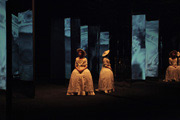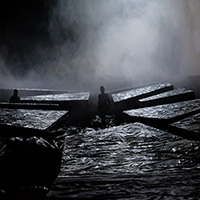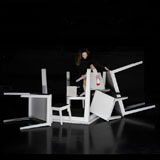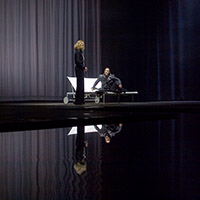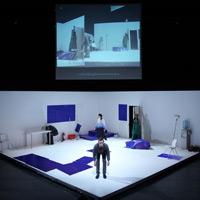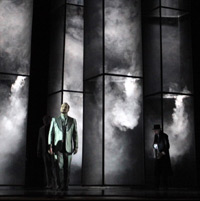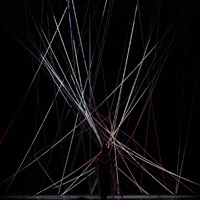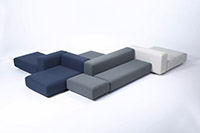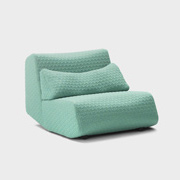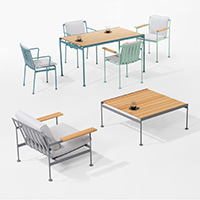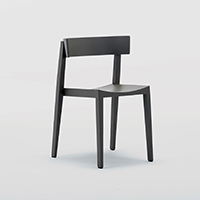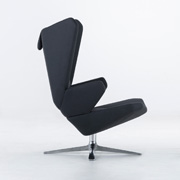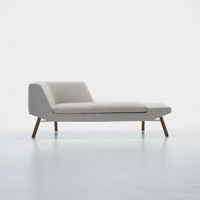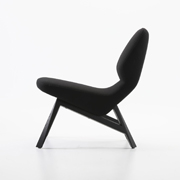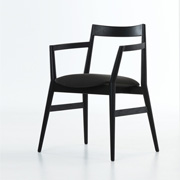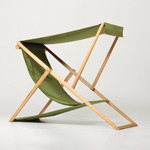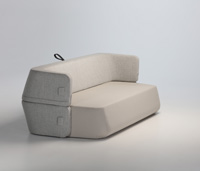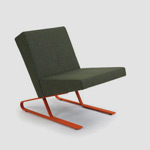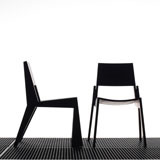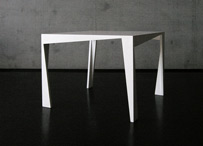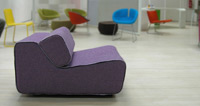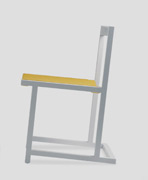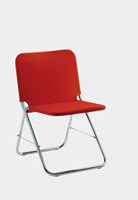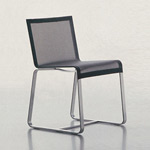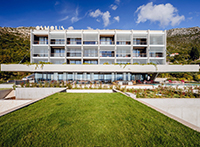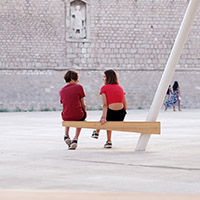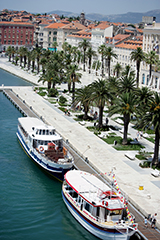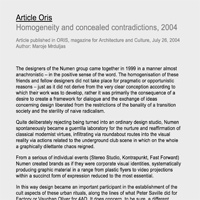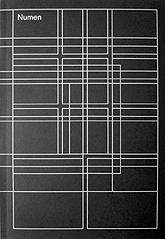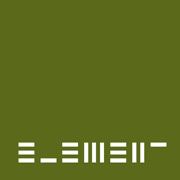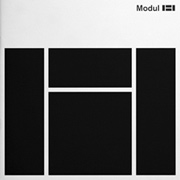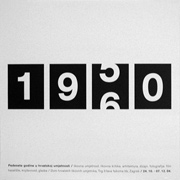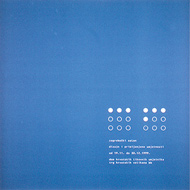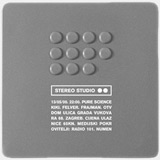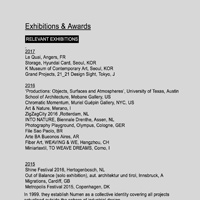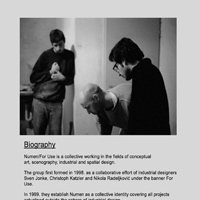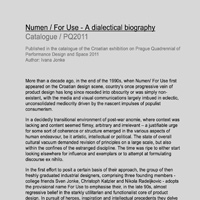Article published in ORIS, magazine for Architecture and Culture, July 26, 2004.
Author: Maroje Mrduljas
Homogeneity and concealed contradictions
The designers of the Numen group came together in 1999 in a manner almost anachronistic – in the positive sense of the word. The homogenisation of these friends and fellow designers did not take place for pragmatic or opportunistic reasons – just as it did not derive from the very clear conception according to which their work was to develop, rather it was primarily the consequence of a desire to create a framework for dialogue and the exchange of ideas concerning design liberated from the restrictions of the banality of a transition society and the sterility of naive radicalism.
Quite deliberately rejecting being turned into an ordinary design studio, Numen spontaneously became a guerrilla laboratory for the nurture and reaffirmation of classical modernist virtues, infiltrating via roundabout routes into the visual reality via actions related to the underground club scene in which on the whole a graphically dilettante chaos reigned.
From a serious of individual events (Stereo Studio, Kontrapunkt, Fast Forward) Numen created brands as if they were corporate visual identities, systematically producing graphic material in a range from plastic flyers to video projections within a succinct form of expression reduced to the most essential.
In this way design became an important participant in the establishment of the cult aspects of these urban rituals, along the lines of what Peter Saville did for Factory or Vaughan Oliver for 4AD. It does concern, to be sure, a different aesthetics and yet a similar intention (in Croatia Zeljko Serdarevic) takes up from Oliver quite brilliantly).
Creating a brand from the assignment it was dealing with, Numen at the same time created a brand out of itself, yet not for commercial, rather for individually creative reasons, the clients thus knowing what they were to expect, without there being any compromise, rather an analytical or one might even say an engineering solution.
Of course, a rather uncompromising stance meant that the choice of clients was relatively limited, while the profession greeted the new algebra of design with respect, as already shown in 1999 with the grand prix of the Zagreb Salon, the display and visual identity of which Numen itself constructed.
In many ways this project was like a manifesto and ostensibly at least richly referential: the graphic riddle of numbering recalled the famed Picelj poster for New Tendencies 4, the omnipresent blue could perhaps be read as a kind of homage to Yves Klein, while the sampling of exhibits, the monospace typography and the Swiss-made grid constituted something like a response to the trendy Emigre deconstruction of the graphic surface.
Still, the fundamental intention of the design for the 34th Salon was not a polemic with the then recent praxes or a demonstration of eloquence from the history of design, rather it was a project that had grown out of the reinvestigation of the bases of the medium and a coming to terms with one's own design adolescence.
In parallel to the Numen base stationed at Sinkoviceva 8, Zagreb, there was also the Viennese branch for product design in Canissiusgasse 13, which retained the already existing label For Use, conceived via an acquaintanceship started at the Akademie für Angewandte Kunst, which meant that the character of Numen became internationalised in the CE context.
The work of For Use has been very consistent from the beginning, founded within the heritage of modern design enhanced with the application of new materials and technological capacities.
What is more, in almost all of their products one can sense the respect for the classics of high modernism of the fifties and sixties, and it is quite regularly possible to spot the influences that prompted or took part in the design process.
These promptings are certainly not of the nature of quotes; rather, in the form of analysis of method, they assist in the perfection of the logic of the mastery of construction, detailing, form…
It is crucial to observe that For Use always designs within firmly set typological frameworks, without any great experiments or breaks with tradition, but with a subtle and careful coordination of all the constituent elements of the product.
This manner of designing implies long-lasting workshop effort on series of 1:1 scale prototypes before the product arrives at the technologist of the firms that is producing and marketing the furniture.
The results are not markedly gestural or revolutionary departures, rather correct and moderate approaches, and the real distinctiveness comes into being in at such moments as the situation when the SMLX series for Zanotta, first of all intended for indoor use, started to be presented and sold as multifunctional furniture as a result of the marketing assessment of the producer.
The dialectics of the Viennese and Zagreb offices operates mainly as a source of energy for the work of Numen, as a way of testing out the ideas, while the spaces for the activity of the product and the graphic sections are relatively clearly determined and function as mutual operational support.
In Numen it is known very well who does what, not only within the individual media, but also to do with the concrete division of work after the initial conceptual agreement, in which all the members take part, has been achieved.
Each phase of the project is subject to collective reinvestigation, which rules out any hierarchy within what is after all a rather numerous group of creative minds but also inevitably leads to oppositions of creative viewpoints and to contradictory stances, and so Numen need not be understood as a monolithic group of the totally like-minded.
The tensions that arise in the process are after all a contribution to the final result.
A key link to all the Numen projects is their inclination to systemic research work, and the ratio of consistence and flexibility within a working concept of this nature constitutes the basic strategic difference between graphic and product departments, which have at the aesthetic level affected each other more than they are themselves ready to acknowledge.
Absolutely synergetic Numen projects are primarily their exhibition and trade fair pavilions: the 34th Zagreb Salon mentioned above, the Croatian Design Exhibition 01, the XO-Retrospective of O.M. Bruketa & Zinic, a series of trade exhibition stands for Exportdrvo and Igepa-plana papers, and, the culmination of it all, the solo show of the Lexicographic Institute in the Hall of the Music Academy Hall. These projects showed the tendency towards total design, to absolute control and a firm and even rigid treatment of the design elements. In this powerful Gesamtkunstwerk there are some amusing over-the-top elements: members of Numen not only dress their hostesses, but, if it is at all possible, also select them personally.
Reality and practice
Unlike most of the rest of contemporary design production, in Numen there is an insistence on a methodology that rules out routine solution and arbitrary approaches that do not subserve the totality of the design, and it is thus possible to talk of making something of a fetish of logic even at the expense of appeal, even of communicativeness.
As a result of their objective and rationalist approach, Numen is often on the verge of falling paradoxically into a kind of elitist hermeticism that, on the one hand, is conditioned by the public’s saturation with all forms of the visual surrounds.
On the other hand, it is a fact that Numen design is inward-looking, its ambition being to be both educative and resistant of spectacle.
This is a thankless kind of position and contains a profound contradiction because design is today at the same time a spectacle-production medium and a spectacle in itself.
The real potential of creative design for critical diversion is dubious because the market system in principle will successfully absorb it, whether it accepts or marginalizes it.
The various fates and different dimensions of commercial success of the graphic and product sections of Numen show both aspects very well, as well as the manners in which, putting it loosely, creative design can make it into the space of more mass presence.
The trade press, in Print and Blueprint, has already presented them, but what are the authentic achievements of Numen, and how effective is its critical role within the real balance of forces on the market at this moment?
Numen Graphic Department once anticipated what in the sequence of historical changes became a fashion, but in general application this trend did not go in essence much further than a pure aesthetic category reduced to the selection of the desirable Swiss sans serif typeface.
Attempts to understand graphic design as algorithm, as means to organise graphic material for the purpose of communication that is not only a light gratification or entertainment will not easily be understood even among the culturally sensitised.
The demanding graphic design of Numen, in principle not interested in beauty in the superficial sense, remains on its own, and is still to have any appropriate interpretation.
Products signed by For Use are produced by and included in the catalogues of some of the most prestigious world furniture makers: Cappelini, Magis, MDF, Zanotta, Interlübcke… making them one of the most successful Croatian creative export products, mainly without having a direct connection with Croatia apart from the address in Sinkoviceva and collaboration with a handful of local craftsmen who occasionally take part in the making of prototypes, usually produced in the Vienna workshop.
For Use is in a double ethical bind: does their professional productiveness result in any social improvement, or are they just industry figures, and is there any hope that this creativity will come to anything in Croatia, rich in its potential for the production of quality furniture?
Alongside the indubitably specific high quality work of Numen, the contribution they make should be seen in these ethic and moral quandaries that they indirectly indicate, which lead to the question of what the real status of design is today, that is, what is the task of creative design today on the cultural scene?
Article published in Novi List, daily croatian newspaper, November 28, 1999.
Author: Jelena Mandic
Article published in Die Presse, austrian newspaper, Mart 22, 2009.

